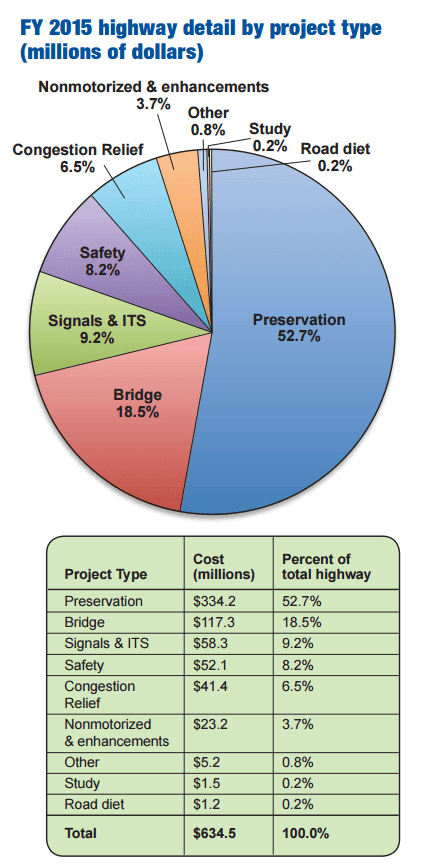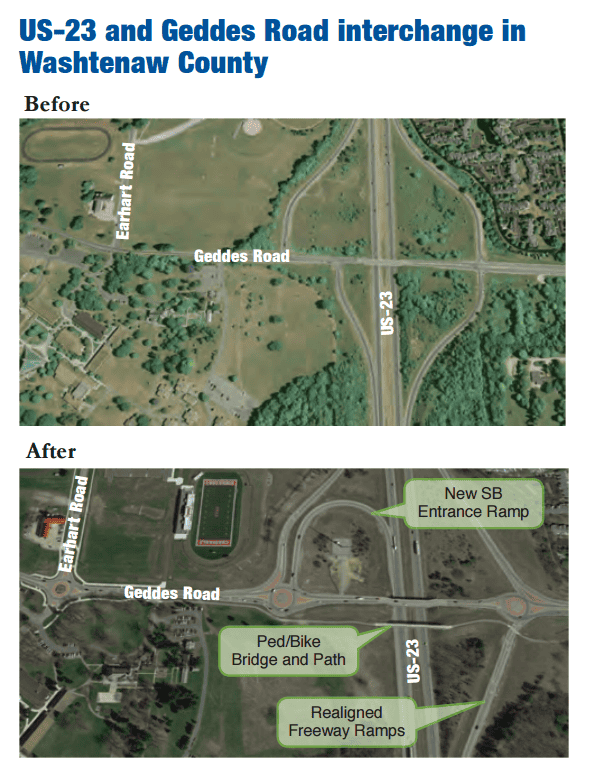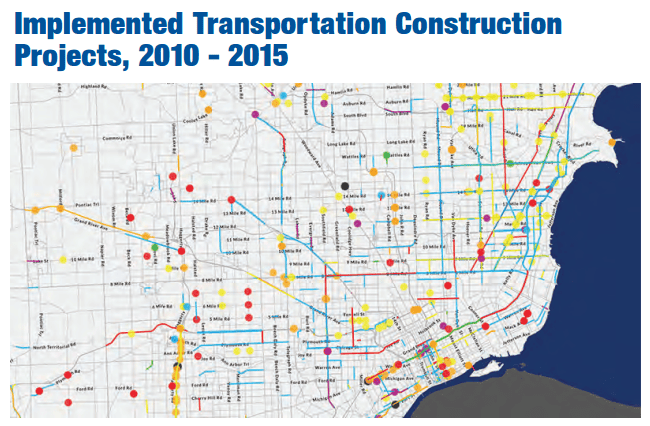The following article appeared in the Fall 2016 issue of Semscope, SEMCOG’s quarterly magazine.
Southeast Michigan’s Transportation Improvement Program (TIP) is a four-year schedule of projects that implements the region’s 2040 Regional Transportation Plan (RTP). Each year, SEMCOG conducts a survey of communities and agencies to chronicle the projects that have been implemented, benchmark the types of transportation investment being made, and evaluate how effectively RTP projects have been executed.
The 2015 survey shows that TIP projects implement high-priority RTP policies focused on reliable, quality infrastructure. As illustrated in the chart on the right, maintaining highway infrastructure through preservation projects – including 776 lane-miles of preservation over the past year – accounted for more than half of the total investment.

The 2015 investment totaled just under $1 billion, which is consistent with transportation investment in recent years. This included $684 million to fund 256 highway projects and $349 million for transit with the majority of transit investment going to operations. Funding supports hundreds of projects in the region. It is important to summarize the projects and see how they match up with regional goals. It is also important to look at the benefits of specific projects.
Project yields significant results in safety, congestion relief, and walking & biking improvements
Let’s consider one example: the US-23 and Geddes Road interchange in Washtenaw County. The Michigan Department of Transportation (MDOT) worked in partnership with the City of Ann Arbor and the Washtenaw County Road Commission to address several issues at this location:
- Significant delays as stoplight signals struggled to meet needs of randomly arriving traffic exiting M-23,
- Safety concerns,
- Ease of pedestrian and bicycle travel through the area.

After years of study, analysis of options, and public input, a project design was completed to make several enhancements to the interchange corridor, including:
- Converting three signalized intersections to roundabouts, including two at the US-23 ramps and one at the intersection of Geddes and Earhart Road (location of Concordia University);
- Modifying expressway ramps;
- Creating a new asphalt bicycle and pedestrian path and bridge;
- Adding new sidewalks and lighting;
- Landscaping and drainage improvements; and
- Utility replacements.
The total project cost was $6.9 million, with positive results. There is better traffic flow coming off US-23 and improved connectivity for walking and biking between the City of Ann Arbor and Ann Arbor Township in this corridor. Safety has also improved.
Total crashes at the US-23 and Geddes Road intersections have decreased by approximately 27 percent since converting to roundabouts, including a 57 percent reduction in crashes with fatalities and injuries. Washtenaw County Road Commission is engaged in ongoing education initiatives on how to safely use roundabouts. These include media coverage, workshops, partnerships with other agencies, videos, community conversations, and presentations. The road commission has also gathered input from road users to guide these efforts.

This map includes projects implemented under Southeast Michigan’s Transportation Improvement Program (TIP).
Whether looking at the numbers on a regional level to see how transportation investment supports the quality of our infrastructure or focusing on a local project to see how it can make daily life easier and safer, the impact of TIP investment is real and significant. In the next issue of Semscope, we will look at how the FY2017-2020 TIP lays out further improvements to Southeast Michigan’s infrastructure.

Leave a Reply